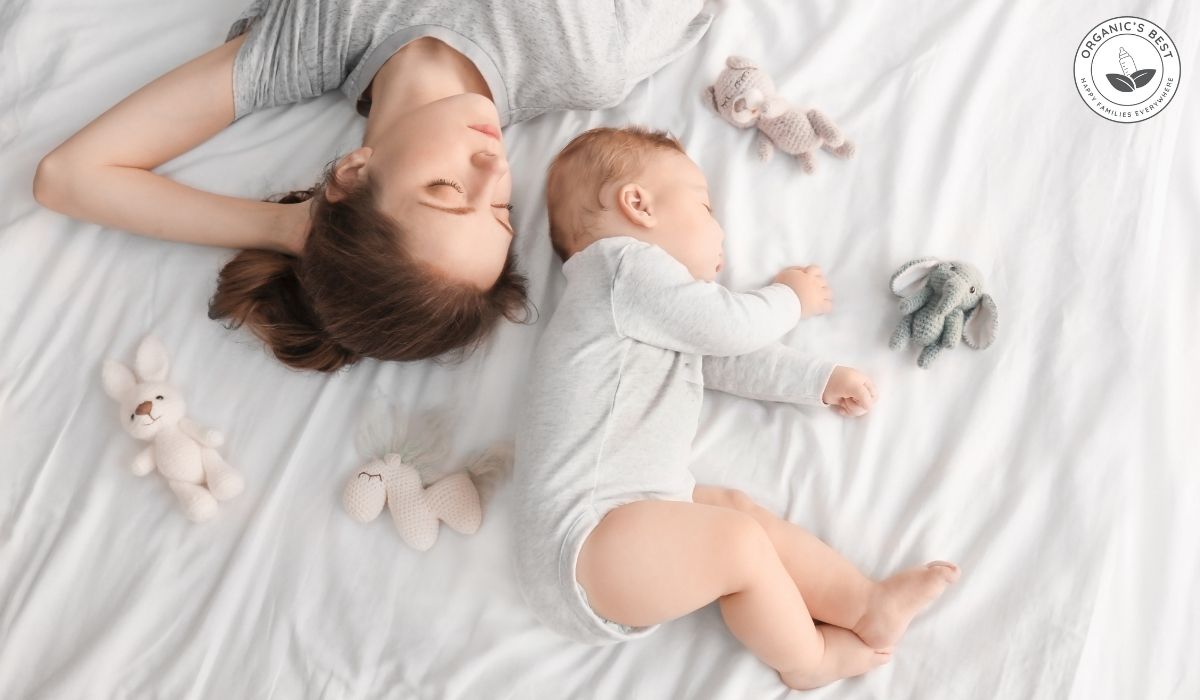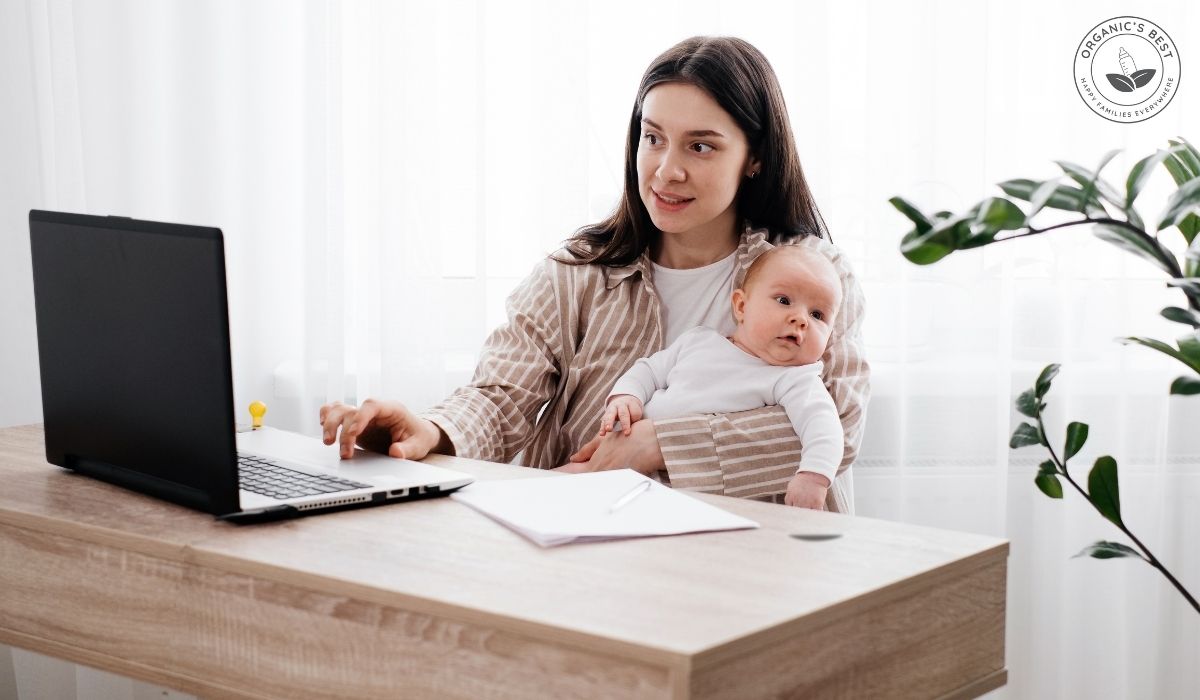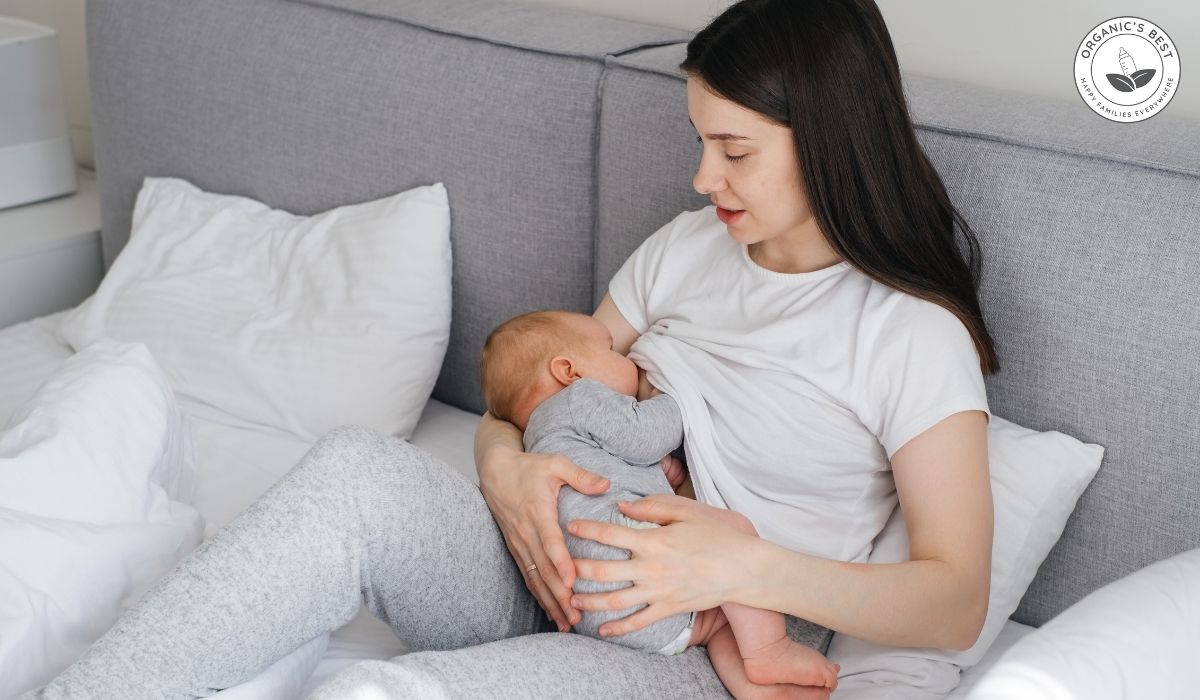Click to Get 2 FREE Boxes/Cans
Only New Customers! Click HERE to Get 2 Extra Boxes/Cans for Free With Your First Order.
BABY FORMULA
Offering new parents top-quality European infant formula from renowned brands like HiPP, Holle, Kendamil, and more. If you’re uncertain about which product to choose, our Formula Finder can help you make the best decision for your baby.
Baby Food
Offering new parents a premium selection of European baby foods, including jars, pouches, cereals, and snacks from esteemed brands like HiPP and Holle.
Co-Sleeping With a Baby: Pros and Cons
by Agustina Fernandez February 25, 2025 7 min read

If you are a parent, there's a good chance you've heard opinions about co-sleeping with baby and the controversy surrounding it.
Parents everywhere ask questions such as, is sharing a bed with my baby dangerous? Will my baby eventually be able to transition to sleeping alone? How do I sleep with a baby tossing and turning next to me all night? Will sleeping with my baby make nursing easier? Will co-sleeping impact future sleep training? Will co-sleeping affect my child's independence?
The answers to these questions aren't so black and white, as each experience will differ. If you do choose to co-sleep, we have some advice and general guidelines to consider.
It is also essential to educate yourself about the risks and concerns associated with co-sleeping before deciding if it is a good option for you and your baby. Making an informed decision can ease any worries you may have about your baby's sleeping arrangements.
Table of Contents
What is Co-Sleeping?
Co-sleeping is when infants or babies sleep in close proximity to either one or both of their parents. This sleeping practice has been on the rise recently as parents strive to bond with their little ones and cultivate a healthy nighttime routine for themself and their babies.
Some choose to co-sleep in the same bed, and some choose to sleep in separate beds in the same room to create personal space while still being in the presence of one another. The two types of co-sleeping are called room-sharing and bed-sharing. Here is some more information about both types of co-sleeping:
Room-Sharing
This co-sleeping involves having your little one sleep in a separate sleeping space, usually a crib or bassinet. This method is generally regarded as safe, as it can make breastfeeding easier, and research shows that having your baby in close proximity lowers the risk of SIDS (Sudden Infant Death Syndrome).
Bed-Sharing
This type of co-sleeping involves babies and parents sleeping together in the same bed. Some healthcare practitioners warn against bed sharing as it may increase the risk of SIDS if not done correctly.

Bed sharing is a touchy topic, and there are differing opinions on it from both parents and healthcare practitioners. In some cultures, a baby sleeping in their parents' bed is a completely normal and common practice. Due to certain customs and sleeping habits, the mortality rates as a result of SIDS are lower and more easily managed.
Reasons for Co-Sleeping With Baby
There are many reasons why co-sleeping is practiced worldwide, especially during the early stages of life, when late-night feedings and cuddles are commonplace. A lot of bonding with your little one happens late at night, so it makes sense to have them nearby, right?
While this may sound appealing, if you want to keep your baby nearby throughout the night, it is best to keep them on a sleeping surface designed for babies next to your bed instead of in the bed with you. As mentioned above, this type of co-sleeping is called room-sharing.
Benefits of Room-Sharing
1) Makes nighttime breastfeeding more accessible and convenient - Having your little one next to you, either in the same bed or in a crib or bassinet, can reduce the amount of time you are spending getting up to feed and the time spent settling back down between feedings.
2) Can help babies fall asleep more easily - Many babies are calmer and get better sleep when around their parents. Co-sleeping can also regulate your baby's sleep cycle and lessen their nighttime crying and fussiness.
3) Can help babies and mothers get more sleep - On average, babies and mothers sleep longer when they are in sensory proximity to one another. Getting more sleep can help mothers with daytime emotional regulation and postpartum depression.
4) Can allow more bonding time for mother and baby - Being in close proximity can allow the mother and baby to be at ease and connect throughout the nighttime. Bonding with your baby early on sets the stage for your relationship with them in the future and eventually, their ability to cultivate relationships with others.

Why is Co-Sleeping So Popular?
For a large part of our history, babies were kept in very close sensory range to their mothers throughout the night as a form of protection and to make feedings easier, and some still choose to follow this trend today. The most likely reason for this is convenience.
As a new parent, having your infant nearby makes feeding them, changing them, and bonding with them accessible and practical.
The Science of Co-Sleeping
Some studies have shown that being in the sensory range can impact some bodily functions of mother and baby, such as heart rates, brain waves, sleep states, oxygen levels, temperature, and breathing.
Studies have also found that co-sleeping can cause the mother and baby to wake up more frequently throughout the night. This can be beneficial because babies need constant attention and care during the first few months of life. This lighter sleep can allow a mother to check on her baby more frequently, and despite waking up more often, both mother and baby actually tend to get more sleep due to the fact that feedings are quicker and both mom and baby take less time to settle back to sleep.
Not only is room-sharing a convenient option, but it has actually been recommended by the American Academy of Pediatrics (AAP) as it can lower the risk of SIDS. Putting your little one in a bassinet or crib in the same room as your bed is a great option to keep them close while following guidelines for a safe sleep environment.
How to Safely Co-Sleep With Baby
We have covered some of the positive aspects of co-sleeping, but there are still many valid concerns that parents and doctors have about bed-sharing.
The American Academy of Pediatrics does not recommend bed-sharing, especially during the first six months when there is an increased risk of SIDS.
That being said, many parents still choose to bed-share, and it is a common practice in many cultures, so it is essential to mitigate the risks to the best of your ability. Evidence suggests that sleeping in a bed with your baby is safer than on an armchair, couch, or other furniture.
Conditions that Can Increase the Risk of SIDS When Bed-sharing
-
Sleeping between two parents
-
Parents who smoke
-
A parent who has recently used alcohol or drugs
-
Loose bedding, such as pillows or bedcovers
-
Other children or pets in the bed

Safe Sleeping Guidelines
These guidelines should be followed to ensure your little one is in a safe sleep environment. As a general guideline, always put your baby to sleep in their own bed, which has been made with infant safety in mind, and avoid bed-sharing as much as possible.
-
Your baby should sleep on their back (not on their tummy or side)
-
Remove anything that could be a strangling risk (jewelry, teething necklaces, etc), and tie back long hair
-
Move the bed away from the wall
-
Keep your baby's head and face uncovered
-
Dress the baby in minimal clothing to avoid overheating. It’s recommended to dress them in one layer more than an adult would wear
-
Avoid falling asleep on couches, recliners, or rocking chairs with your baby
-
Avoid drugs, alcohol, or anything that may cause drowsiness or reduce alertness

How Do You Know if Co-Sleeping Is Right for You?
We all know that sleep is integral to our health, so we want to ensure that sleeping arrangements work for both parents and babies. Co-sleeping with your baby will not work for everyone; for many parents, the risks outweigh the pros.
Regardless of your chosen sleeping arrangements, it is important to understand your baby's nighttime needs, create positive sleep routines, and monitor your baby's behavior to know if they are getting the right amount of sleep.
If you are struggling with your baby's sleep and are not comfortable with co-sleeping, there are many safe methods to help your little one get the sleep they need.
Safe Techniques to Help Your Baby Sleep
-
Look for cues that your baby is tired and act on them - Putting your baby down to sleep when melatonin is elevated in their system will help them get to sleep quickly and allow them to sleep longer. Timing is critical, as allowing your baby to get overtired can make this process more difficult. Some signs they are ready for sleep include pulling at their ears, yawning, fluttering eyelids, or difficulty focusing.
-
Use noise to your advantage - White noise is your friend! This calming sound can drown out any background noise that could potentially wake your sleeping baby.
-
Create healthy sleeping habits - A consistent bed and nap routine can let your baby know that sleep is on the way. This routine can consist of bathing, cuddling, reading a book, and listening to calm music. Try to do this before they get overtired, as keeping them awake for this routine would be counterproductive.
-
Be prepared for quick feeds and changes - Keep late-night changes and feeds simple by having everything you may need prepared in advance. Having fresh diapers on hand and extra sleepwear or swaddles will keep these moments short and sweet, hopefully allowing both mom and baby to fall back asleep quickly.

Conclusion
At the end of the day, it is up to each parent to decide what is best for their child. Choosing to room-share can be done safely and offers a convenient alternative to more conventional sleep practices. This can lead to quality bonding time and easier nighttime breastfeeding, which has the potential to positively impact the health and well-being of both mother and baby.
However, you choose to set up your baby's sleep environment, the most important thing is that your little one is safe and cared for. The sleeping location does not matter as much as the relationship you cultivate with your baby throughout all the special moments.
While co-sleeping in the same bed is not recommended, it is important to be transparent with your pediatrician so they can advise you on the risks and offer constructive advice.
|
Disclaimer Please be aware that this information is based on general trends in babies, and it is not medical advice. Your doctor should be your first source of information and advice when considering any changes to your child's formula and when choosing your child's formula. Always consult your pediatrician before making any decisions about your child's diet or if you notice any changes in your child. Breastfeeding is the best nutrition for your baby because breast milk provides your child with all the essential nutrients they need for growth and development. Please consult your pediatrician if your child requires supplemental feeding. |
Agustina Fernandez
Dr. Agustina Fernandez earned her medical degree from the prestigious Universidad Nacional de Córdoba, Argentina. With a deep-rooted passion for pediatrics, Dr. Fernandez is currently on the path to specializing in children's healthcare. Recently, she has delved into the vital field of infant nutrition. Her research interests include breastfeeding, infant formula, and baby food in little ones’ formative years. Dr. Fernandez's commitment to this area of study underscores her dedication to ensuring the health and well-being of children from their earliest days.
Leave a comment
Comments will be approved before showing up.
Also in Organic Infant Nutrition and Health Blog

10 Winter Activities for Kids and Toddlers
by Agustina Fernandez January 06, 2026 8 min read
Read More
How to Choose The Best Infant Formula: A Guide to EU Organic Formulas
by Agustina Fernandez January 05, 2026 14 min read
Read More
Best Formula for Breastfed Babies 2026 Guide
by Agustina Fernandez January 05, 2026 15 min read
Read More
Reviewed by Dr. Bardha Citaku, MD
-

Dr. Bardha Citaku: Medical Reviewer of Organic's Best Blog
Dr. Bardha Citaku completed her medical studies at the University of Prishtina in Kosovo, where she began her journey into the field of medicine. She has since developed a career in medical research, contributing to projects with notable organizations, including the World Health Organization (WHO).
